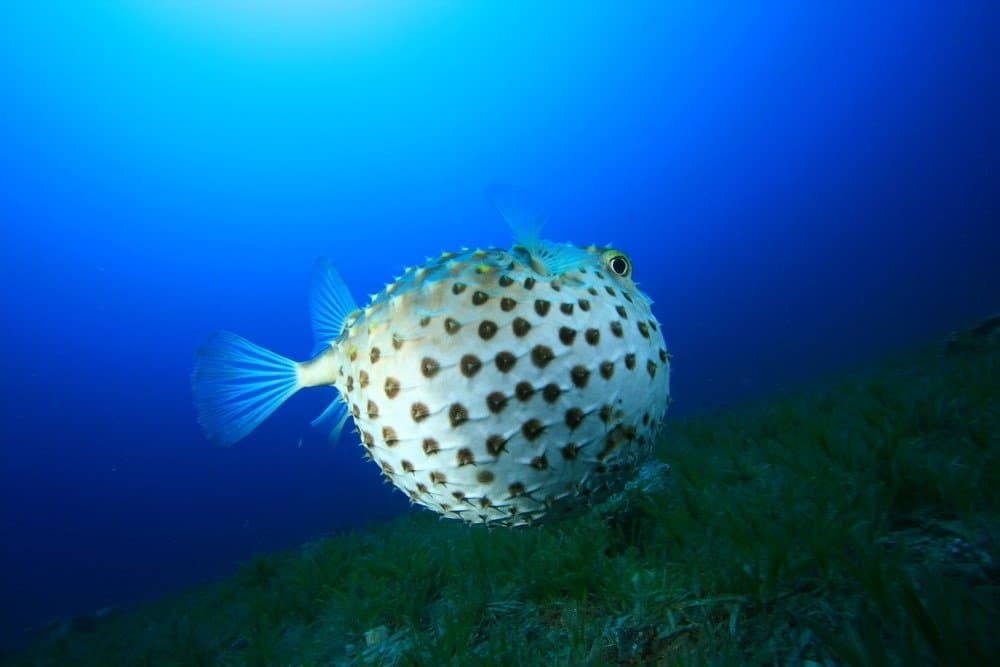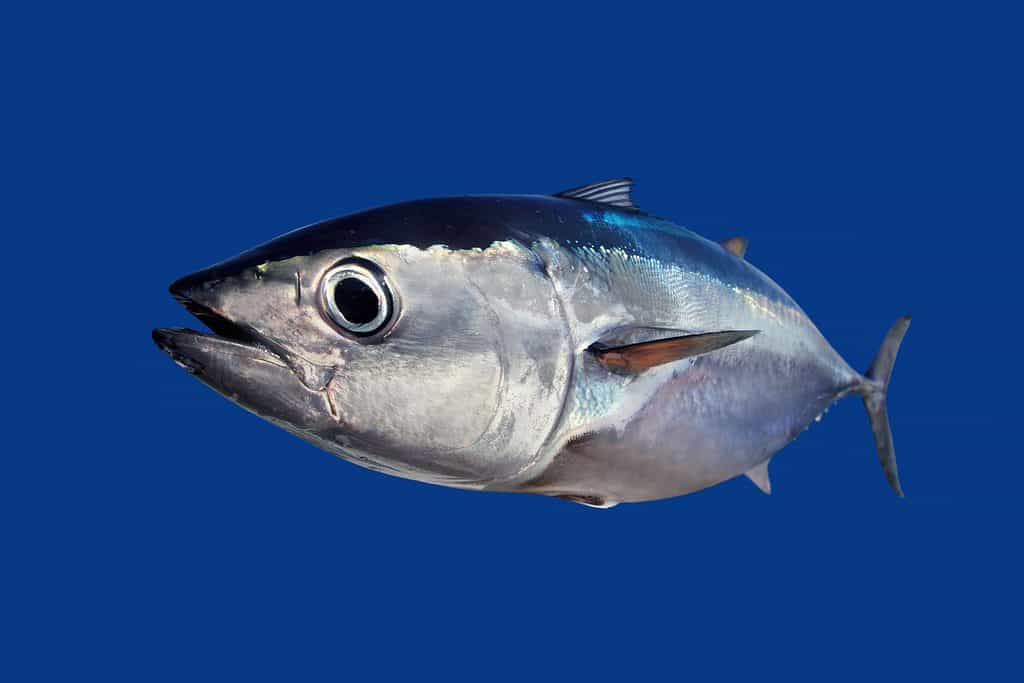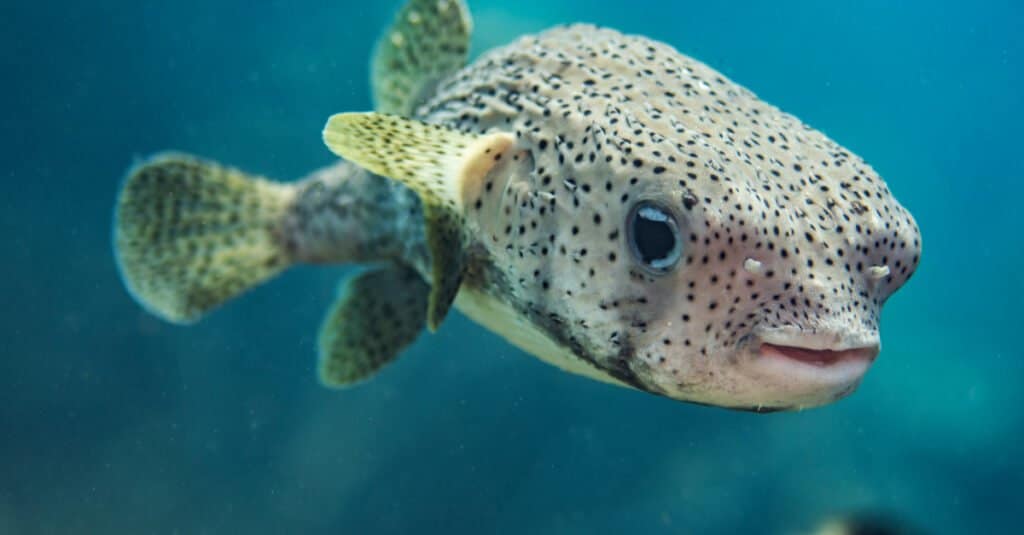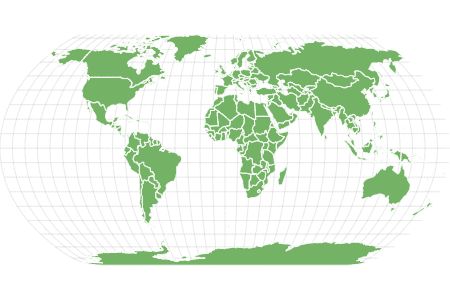Porcupinefish
Diodon hystrix
The Porcupinefish secrete a potent neurotoxin known as tetrodotoxin; this poison can kill both people and predators.
Advertisement
Porcupinefish Scientific Classification
- Kingdom
- Animalia
- Phylum
- Chordata
- Class
- Actinopterygii
- Order
- Tetraodontiformes
- Family
- Diodontidae
- Genus
- Diodon
- Scientific Name
- Diodon hystrix
Read our Complete Guide to Classification of Animals.
Porcupinefish Conservation Status
Porcupinefish Facts
- Name Of Young
- Fry
- Fun Fact
- The Porcupinefish secrete a potent neurotoxin known as tetrodotoxin; this poison can kill both people and predators.
- Biggest Threat
- Large fish, marine mammals and humans
View all of the Porcupinefish images!
The world’s tropical and subtropical seas are home to an unusual-looking and fascinating type of fish known as the Porcupinefish. These spiny creatures have distinctive body shapes and an incredible array of defenses. Therefore they can inflate their bodies to make themselves look more prominent, as they use their spines to ward off predators. In addition, when attacked, porcupine fish have the ability to make a loud clicking noise. The purpose of this sound is to scare away and discourage attackers. Overall, the Porcupinefish is a captivating fish that’s sure to pique the interest of any lover of aquatic life.

Porcupinefish have spiny, needle-like scales that cover their bodies, making them difficult for predators to swallow.
©Jesus Cobaleda/Shutterstock.com
4 Facts about the Porcupinefish
- The Porcupinefish secrete a potent neurotoxin known as tetrodotoxin; this poison can kill both people and predators.
- Porcupinefish have spiny, needle-like scales that cover their bodies, making them difficult for predators to swallow.
- Due to their nocturnal nature, Porcupinefish spend the day hiding in cracks and crevices before emerging at night to search for food.
- Porcupinefish can live for up to 10-15 years in captivity.
Similar Porcupinefish Species

Pufferfish are one of the many species which resemble a porcupinefish.
©Rich Carey/Shutterstock.com
Here are a few fish species that resemble the Porcupinefish in terms of appearance, activity, and habitat. These include:
- Balloonfish
- Pufferfish
- Burrfish
- Ocean sunfish
- Leatherjacket fish
Classification and Scientific Name of the Porcupinefish
The Porcupinefish belongs to the family Diodontidae and is scientifically known as Diodon hystrix. The genus Diodon comes from the Greek word Diodon, which means two teeth, referring to the long and sharp teeth in the fish’s upper and lower jaw.
The name hystrix comes from the Greek word, meaning porcupine, referring to the fish’s spiny exterior.
The Appearance of the Porcupinefish
- Shape: Porcupinefish have a round, slightly oblong body shape with a flattened underside. It has a large, rounded head, wide mouth, and powerful jaws.
- Spines: The most distinctive feature of the Porcupinefish is its spiny exterior, which is covered in large, triangular scales. The scales become raised and inflated when threatened. The spines are typically yellow or brown and are very stiff and sharp.
- Color: Porcupinefish have a mottled or speckled pattern on their skin, which can be yellow, brown, or gray. Some species have dark patches or stripes on their sides.
- Size: Porcupinefish can grow up to 36 inches in length and weigh no more than 4-6 pounds. The size of the fish can depend on the species and the specific location.
- Mouth: The mouth of the Porcupinefish is large and wide, with powerful jaws that are capable of crushing the shells of its prey. The teeth are small, sharp, and used to grip and tear food.
Distribution, Population, and Habitat
Distribution: The Atlantic, Pacific, and Indian Oceans are just a few areas where you can find Porcupinefish.
Population: Due to limited information on their numbers in many areas, it is difficult to determine their overall population trends. However, the population of porcupine fish is stable and not threatened. Therefore, they are not considered endangered or vulnerable.
Habitat: Porcupinefish are found in warm and tropical waters near coral reefs and rocky shores. They are also commonly found in estuaries and lagoons and can live in depths ranging from a few meters to hundreds of meters. They are generally solitary creatures but can sometimes swim in small groups in areas with abundant food.
Predators and Prey

Larger fish, like tuna, are some of the predators of the procupinefish.
©lunamarina/Shutterstock.com
The Porcupinefish has a relatively low level of predation because of its spiny exterior, but it is still vulnerable to predators, which include:
- Larger fish, such as barracudas, sharks, and tuna, feed on this fish species.
- Marine mammals like dolphins and seals can also prey on Porcupinefish. However, these mammals catch these fish using their agility and speed, despite their dangerous spines.
- Humans use fishing nets and spear guns to capture these fish, which are used as a food source or as bait for other types of fishing.
Although being an essential part of the food chain, they provide food for larger fish and marine mammals. Porcupinefish feed on a variety of prey that, includes:
- Shrimp
- Crab
- Lobster
- Snails
- Clams
- Sea urchins
- Starfish
Reproduction and Lifespan
Porcupinefish are oviparous, which means they lay eggs. The female lays eggs in large, gelatinous masses that are often attached to rocks or other structures. The male fertilizes the eggs, and after a few days, the ova develops into larvae. Until they are prepared to settle on the bottom, the larvae float in the water column until the fry becomes adults. As they grow, these fries graze on plankton and other small organisms.
Porcupinefish can live for up to 20 years in the wild, which is a reasonably long lifespan. Given its slow growth rate and ability to avoid predators, this remarkable fish has a lengthier life span than many other fish species.
Fishing and Cooking

Porcupinefish are caught via handlining, casting, and
spearing
.
©J.T. Lewis/Shutterstock.com
Fishing techniques used to catch Porcupinefish include handlining, casting, and spearing. In some areas, they are caught commercially for their meat, while in others, they are only caught for sport.
Meat from Porcupinefish is delectable when cooked and is used in several dishes, such as soups, stews, and curries. Its firm, white meat is frequently likened to other white-fleshed fish, like cod and haddock. The Porcupinefish’s skin is not meant to be eaten, but the flesh can be cooked in a number of ways, such as grilling, frying, and baking.
View all 192 animals that start with PPorcupinefish FAQs (Frequently Asked Questions)
Are Porcupinefish dangerous?
Yes, the Porcupinefish secretes a potent neurotoxin known as tetrodotoxin; this poison can kill both people and predators.
Where can Porcupine fish found?
The Atlantic, Pacific, and Indian Oceans are where the Porcupinefish species can be found.
What do Porcupinefish eat?
Porcupinefish feed on a variety of prey that, includes:
- Shrimp
- Crab
- Lobster
- Snails
- Clams
- Sea urchins
- Starfish
Thank you for reading! Have some feedback for us? Contact the AZ Animals editorial team.
Sources
- florida museum, Available here: https://www.floridamuseum.ufl.edu/discover-fish/species-profiles/diodon-hystrix/
- national aquarium, Available here: https://aqua.org/explore/animals/porcupinefish
- wilderness classroom, Available here: https://wildernessclassroom.org/wilderness-library/porcupinefish/

















